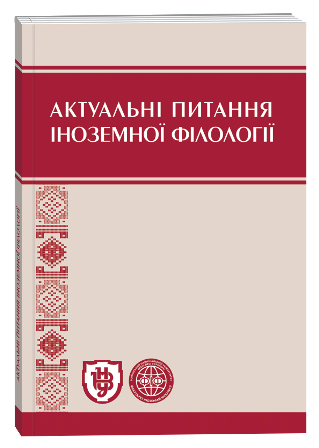REPETITION AS A MEANS OF ARTISTIC REPRESENTATION OF PSYCHOLOGISM IN SHORT STORIES OF E. CALDWELL
DOI:
https://doi.org/10.32782/2410-0927-2021-14-7Keywords:
psychologism, artistic thinking, naturalism, realism, rhythm, repetition, emotionality, pattern, consciousnessAbstract
The problems of psychology, as an essential category of the artistic work, constitute an important and relevant subject of literary research and critical publications. In the article, the author tries to outline ways of expressing psychological models and constructions in the short stories of the American writer Erskine Caldwell. Examples of several of the writer’s most famous short stories «Saturday Afternoon”, «Kneel to the Rising Sun «, «The Sorcerer», «Where the girls were different» – examine in detail the models of building a qualitatively new type of poetics, which stood out at the turn of the century and later was states as expressionism. Attention is paid to artistic thinking, and thus the principles of creating national characters in the works of E. Caldwell, which are closely related to the emotionality of the American peasant, the peculiarities of his worldview as well as social and political living conditions. The aim of the article is to identify the means of psychologism in the work of Erskine Caldwell, which allow us to reveal the deep psychology of the artist’s work. Methodology. The following methods were used in the study: theoretical (analysis, synthesis, systematization), achievements of cultural and historical school (to compare certain phenomena in Ukrainian and American literary processes against the background of historical times), literary hermeneutics (for interpretation of specific works of art), biographical (to identify the conditions for the formation of creative methods of the American writer). The study of Erskin Caldwell’s work is a topical issue in modern literary criticism, due to the need for further in-depth studies of the literary process of the 1920s and 1930s. Since the 1920s, literary critics, defining Erskine Caldwell’s role in the development of American literature, have paid considerable attention to his work, which reflects the multifaceted and dynamic picture of American life in the first half of the twentieth century. Since the creative heritage of excellent classics, its reception in the Ukrainian space has hardly been studied, none of the researchers and scholars interpret the literary heritage of Erskine Caldwell in a comparative perspective, and this motivates the scientific novelty of the research topic. Conclusions. Thus, artistic thinking, and hence the principles of creating national characters in the work of E. Caldwell are closely related to the emotionality of the American peasant, the peculiarities of their worldview and worldview, as well as socio-political living conditions. The artist recreated the American character, conveyed the national flavor by depicting customs, life, folklore, landscape and portrait paintings.
References
Expressionism in the Twentieth Century American Drama by Norbert Joseph Hruby. URL: https://ecommons.luc.edu/cgi/viewcontent.cgi?article=1215&context=luc_theses
Frohock W. M. “Erskine Caldwell: Sentimental Gentleman from Georgia”, Vol. 31, No. 4 (AUTUMN 1946), pp. 351–359 (9 pages). URL: https://www.jstor.org/stable/43463152?seq=1
Gilbert R. Erskine Caldwell on writers / January 28, 2010. URL: http://richardgilbert.me/erskine-caldwell-on-thenature-of-writers/
Goksen Aras «Personality and Individual Differences: Literature in Psychology – Psychology in Literature» Procedia – Social and Behavioral Sciences 185 (2015), 250–257.
Hitchcock, Bert. Well, Maybe Just This Once: Erskine Caldwell, Old Southwest Humor and Funny Ha-Ha / Bert Hitchcock // Reading Erskine Caldwell: New Essays / Ed. by Robert L. McDonald. Jefferson, NC; London : McFarland, 2006. P. 27–45.







